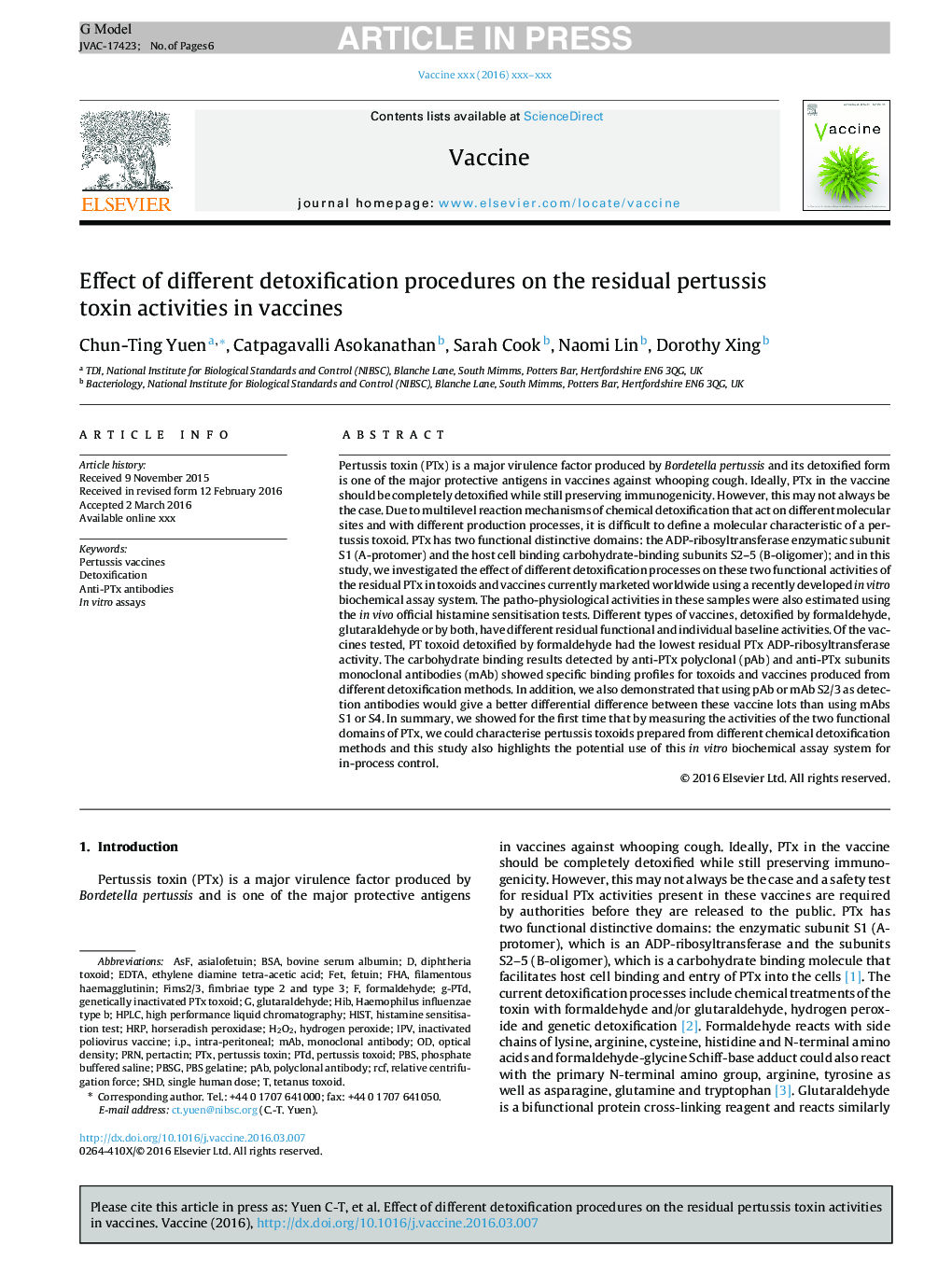| Article ID | Journal | Published Year | Pages | File Type |
|---|---|---|---|---|
| 10962653 | Vaccine | 2016 | 6 Pages |
Abstract
Pertussis toxin (PTx) is a major virulence factor produced by Bordetella pertussis and its detoxified form is one of the major protective antigens in vaccines against whooping cough. Ideally, PTx in the vaccine should be completely detoxified while still preserving immunogenicity. However, this may not always be the case. Due to multilevel reaction mechanisms of chemical detoxification that act on different molecular sites and with different production processes, it is difficult to define a molecular characteristic of a pertussis toxoid. PTx has two functional distinctive domains: the ADP-ribosyltransferase enzymatic subunit S1 (A-protomer) and the host cell binding carbohydrate-binding subunits S2-5 (B-oligomer); and in this study, we investigated the effect of different detoxification processes on these two functional activities of the residual PTx in toxoids and vaccines currently marketed worldwide using a recently developed in vitro biochemical assay system. The patho-physiological activities in these samples were also estimated using the in vivo official histamine sensitisation tests. Different types of vaccines, detoxified by formaldehyde, glutaraldehyde or by both, have different residual functional and individual baseline activities. Of the vaccines tested, PT toxoid detoxified by formaldehyde had the lowest residual PTx ADP-ribosyltransferase activity. The carbohydrate binding results detected by anti-PTx polyclonal (pAb) and anti-PTx subunits monoclonal antibodies (mAb) showed specific binding profiles for toxoids and vaccines produced from different detoxification methods. In addition, we also demonstrated that using pAb or mAb S2/3 as detection antibodies would give a better differential difference between these vaccine lots than using mAbs S1 or S4. In summary, we showed for the first time that by measuring the activities of the two functional domains of PTx, we could characterise pertussis toxoids prepared from different chemical detoxification methods and this study also highlights the potential use of this in vitro biochemical assay system for in-process control.
Keywords
FETPBSGFHAIPVPRNasfPTXPABPTDi.p.RCFHRPPBSmAbBSAFilamentous haemagglutininHydrogen peroxideIn vitro assaysbovine serum albuminMonoclonal antibodyPolyclonal antibodyEDTAethylene diamine tetra-acetic acidAsialofetuinPertussis toxoiddiphtheria toxoidtetanus toxoidintra-peritonealDetoxificationpertussis toxinshdFetuinFormaldehydePhosphate buffered salineHaemophilus influenzae type bHibH2O2HistPertussis vaccinesInactivated poliovirus vaccineHorseradish peroxidasePertactinoptical densityhigh performance liquid chromatographyHPLCGlutaraldehyde
Related Topics
Life Sciences
Immunology and Microbiology
Immunology
Authors
Chun-Ting Yuen, Catpagavalli Asokanathan, Sarah Cook, Naomi Lin, Dorothy Xing,
